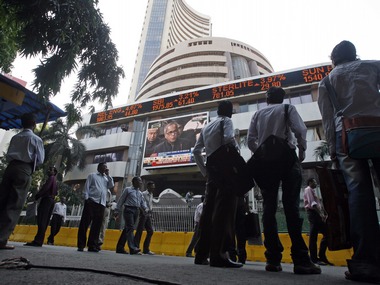Key domestic equity benchmark indices may be heading towards their worst performance in last three years in 2015, but the likely outcome, however, didn’t deter one set of investor category from mounting a massive bullish bet on the stock markets this year. [caption id=“attachment_2562098” align=“alignleft” width=“380”]  Reuters[/caption] Yes, we are talking about the domestic mutual fund segment, which registered its best performance till date as the category infused a record Rs 70,173 crore worth of capital into local equities this year, even as the broad market trend displayed a more sluggish mood. As against this, foreign institutional investors’ (FIIs) participation, the mainstay of the Indian stock market, was quite tepid, injecting funds to the tune of just Rs 16,118.57 crore till date. So, the key question that arises here is then why did benchmark Sensex & Nifty fail to generative positive returns despite the strong fund infusion from the domestic mutual fund category? According to stock market experts, the retail investor money that made its way into domestic mutual funds via systematic investment plan (SIP) or either through various equity-related fund schemes this year was mostly ploughed into several mid & small-cap stocks. Also, other retail investors, who independently invested in stock markets by not taking mutual fund route mostly bought second-rung stocks as fundamentals of most mid & small-cap companies stood better compared to their large-cap peers, said G Chokkalingam, founder & managing director at Equinomics Research & Advisory. The performance can be seen from the fact that benchmark Sensex till date posted negative return of 6 percent this year compared with 6.22 percent rise in BSE Mid-cap and 5.8 percent jump in BSE Small-cap. According to Chokkalingam, FIIs mostly stick to the universe of Sensex, Nifty and top BSE-100 companies for their stock market play, where as mutual fund investments are spread across BSE-500 stocks, which respresent the small and mid-cap stocks. “As two-third of Sensex stocks represent metals, infrastructure and oil & gas companies, their performance took a massive hit because of a commodity rout in global markets this year. Hence, stocks such as Hindalco, Vedanta, ONGC, Tata Steel etc suffered heavily as the crash in global commodity prices and slackening overseas demand impacted their earnings performance over the past 3-4 quarters,” said Chokkalingam. As a result, stocks of BHEL slumped 35 percent, Tata Steel tumbled 34 percent, ONGC dropped 31 percent, SBI faltered nearly 27 percent, Gail lost 19 percen and Coal India shed 16 percent over the previous year. More so, the defensives such as pharmaceuticals and FMCG companies, too, posted single digit growth in earnings this year, as second consecutive year of monsoon deficit and rising currency volatility impacted the topline and bottomline growth of many of the defensive companies, said A K Prabhakar, head of research retail segment, with IDBI Capital. Shares of some defensive stocks such as ITC fell 12 percent, Dr Reddy’s declined 7 percent and TCS eased nearly 5 percent. Post Lehman crisis, Sensex earnings were buoyed by strong performances from the FMCG, pharma and IT companies, which mostly posted double-digit earnings growth because of stable currency movement against the dollar, favourable monsoon leading to improved volume growth and higher outsourcing spends from global clients..But the scenario is fast changing with weak monsoon and fluctuating currency coupled with sluggish global demand adding to their woes and reflecting in the mainstream Sensex stocks, said Chokkalingam. On the other hand, massive domestic mutual fund infusion into several leading mid & small-cap stocks resulted in strong appreciation in these stocks. For instance, several mid-cap stocks such as Essar Oil zoomed 139 percent, Ashok Leyland shot up 71 percent, Britannia Industries flared up 58 percent and Wockhardt rose 55 percent so far this year. Similarly, in the small-cap space, shares of Intrasoft Technologies vaulted 663 percent, Kellton Tech zoomed 406 percent, Rajesh Exports surged 376 percent, Gayatri Projects scaled up 367 percent and JMT Auto was up 350 percent. Most of the mid & small-cap companies were the beneficiaries of the steep fall in metals and oil prices, as most of them use these derivatives for manufacturing their end-products. Hence quality second-rung stocks witnessed hectic buying activity, said Prabhakar of IDBI Capital. “Several mid-cap companies posted strong earnings growth in the past 2-3 quarters because of the benefit arising out of lower commodity prices and steady rise in demand from overseas markets,” added Prabhakar. Stock market analysts reckon the upsurge in second-rung stocks may continue in the next 4-5 months as commodity prices are likely to remain subdued for some more time. “However, if the commodity markets doesn’t witness a turnaround in next six months, it could signal that the world is heading towards a stagflation stage, which would make equity markets as an asset class not worthy for investors and lead to massive outflows from large and small-cap stocks,” said Chokkalingam. With inputs from Kishor Kadam
As against this, foreign institutional investors’ (FIIs) participation, the mainstay of the Indian stock market, was quite tepid, injecting funds to the tune of just Rs 16,118.57 crore till date
Advertisement
End of Article


)

)
)
)
)
)
)
)
)



